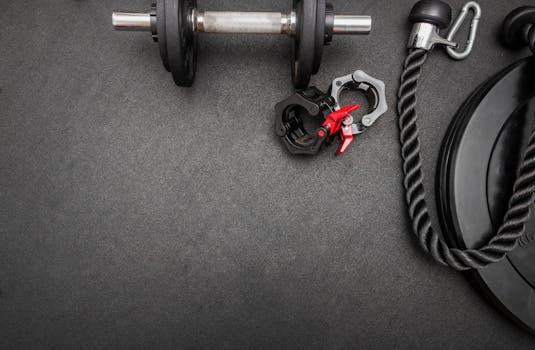
Burn Fat Fast: The Ultimate Guide to High-Intensity Interval Training (HIIT) for Fat Loss
Takeaways: High-Intensity Interval Training (HIIT) is a time-efficient exercise strategy that alternates short bursts of intense activity with periods of rest or lower-intensity exercise. This method not only burns more calories in less time but also boosts your metabolism and helps in fat loss. Incorporating HIIT into your routine can lead to significant improvements in fitness and body composition.
High-Intensity Interval Training (HIIT) has gained immense popularity in the fitness world, and for good reason. It is an effective and efficient way to achieve fat loss while improving cardiovascular fitness. This article will explore the principles of HIIT, its benefits for fat loss, and how to incorporate it into your routine.
Understanding High-Intensity Interval Training

The concept of HIIT is based on the principle of exerting maximum effort during the high-intensity intervals to push your body to its limits. This type of training engages multiple muscle groups and keeps your heart rate elevated, leading to greater calorie burn both during and after the workout.
The Science Behind HIIT and Fat Loss

EPOC refers to the increased rate of oxygen intake following strenuous activity, which helps restore the body to its resting state. During this recovery phase, the body continues to burn calories at an elevated rate, which can last for hours post-workout. This makes HIIT a powerful tool for those looking to maximize fat loss in a shorter amount of time.
Benefits of HIIT for Fat Loss
- Time Efficiency: One of the most significant advantages of HIIT is that it can be completed in a fraction of the time compared to traditional workouts. A 20-30 minute HIIT session can provide the same or even greater benefits than an hour of steady-state cardio.
- Increased Caloric Burn: HIIT workouts often burn more calories than steady-state cardio. The intense bursts of activity lead to a higher calorie expenditure during the workout and contribute to increased calorie burn in the hours following the workout.
- Improved Metabolic Health: Regular HIIT training can improve insulin sensitivity, blood sugar levels, and cardiovascular health, making it a beneficial exercise strategy for overall health.
- Variety and Flexibility: HIIT can be adapted to various fitness levels and preferences. You can incorporate different exercises, such as running, cycling, bodyweight movements, or strength training, to keep your workouts fresh and engaging.
How to Incorporate HIIT Into Your Routine


- Choose Your Exercises: Select a combination of exercises that target different muscle groups. Common choices include sprinting, jumping jacks, burpees, and kettlebell swings.
- Set Your Intervals: A typical HIIT workout might consist of 20-30 seconds of intense activity followed by 30-60 seconds of rest. For beginners, starting with a 1:2 work-to-rest ratio is advisable.
- Start Slow: If you are new to HIIT, begin with just 1-2 sessions per week, and gradually increase the frequency as you build endurance and strength.
- Listen to Your Body: HIIT can be challenging, so it’s essential to pay attention to your body’s signals. If you feel overly fatigued or experience pain, take a break or reduce the intensity.
- Stay Consistent: Like any fitness program, consistency is key. Aim to include HIIT workouts in your routine 2-3 times a week for optimal results.
Conclusion








